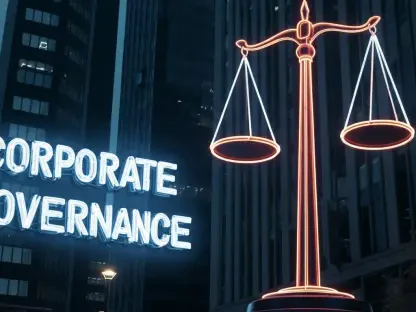Introduction: The Urgency of Recognizing Environmental Harm
The debate over whether environmental harm should be classified as a crime against humanity has gained significant traction in recent years, reflecting a growing global concern over ecological destruction and its profound impact on human survival. This discussion focuses on the potential recognition of environmental devastation, often termed “ecocide,” as a severe form of mass harm under international criminal law, possibly as the 12th enumerated act in a forthcoming United Nations treaty on crimes against humanity. The significance of this issue cannot be overstated, as environmental destruction threatens not only ecosystems but also displaces communities, destroys livelihoods, and exacerbates global inequality. As climate change accelerates and deliberate acts of ecological harm become more evident, the call for legal accountability has intensified, prompting a reevaluation of existing international frameworks. This timeline traces the historical evolution of environmental harm within the sphere of international law, highlighting key events and milestones that have shaped the discourse and underscoring why this topic remains a critical concern in today’s world.
Key Milestones in the Journey of Environmental Harm and International Law
1986: Early Discussions in the International Law Commission
In 1986, the International Law Commission (ILC) initiated early discussions on environmental harm as a potential international crime during deliberations on the Draft Code of Crimes Against the Peace and Security of Mankind. These initial conversations reflected a nascent awareness of ecological damage as a threat to human security, with proposals to include severe environmental destruction as a punishable offense. However, resistance emerged due to challenges in defining such acts with precision and skepticism about whether they carried the same gravity as established crimes like genocide. Although these early ideas did not materialize into formal provisions, they laid a crucial foundation for future debates on holding individuals and states accountable for environmental devastation under international law.
1991: Formal Proposal in the Draft Code
By 1991, the ILC took a significant step forward by explicitly proposing environmental harm as a standalone crime in its Draft Code of Crimes. The draft sought to criminalize acts causing widespread, long-term, and severe damage to the natural environment, acknowledging the deep impact on human populations. Despite garnering support from some states and legal scholars, objections persisted over the lack of clear legal definitions and the perception that environmental harm was of secondary importance compared to traditional atrocities. This moment was pivotal, as it formally introduced the concept of environmental destruction as an international crime, even though insufficient political will prevented its immediate adoption.
1996: Narrowing Scope to War Crimes in Revised Draft Code
In 1996, the ILC revised its Draft Code, shifting the focus of environmental harm by linking it specifically to war crimes rather than recognizing it as a standalone offense or a crime against humanity. This compromise addressed ongoing concerns about defining environmental damage too broadly and prioritized contexts of armed conflict where destruction was often intentional. While this adjustment acknowledged the severity of environmental harm in specific scenarios, it restricted its applicability to peacetime destruction, creating a gap that continues to drive advocacy for broader recognition. This revision highlighted the persistent challenge of balancing legal precision with the need for comprehensive protection across all contexts.
1998: Limited Recognition in the Rome Statute
The establishment of the International Criminal Court (ICC) through the 1998 Rome Statute marked a landmark moment for international criminal law, yet it provided only partial acknowledgment of environmental harm. Under Article 8, environmental destruction was classified as a war crime, applicable solely during armed conflict and subject to strict conditions such as proportionality. This provision left peacetime destruction and broader impacts on civilian populations largely unaddressed, exposing the limitations of the statute in tackling the full scope of ecological harm. The narrow focus reinforced the need for a more expansive legal framework capable of addressing environmental damage beyond the confines of warfare.
2022: UN Recognition of Environmental Rights as Human Rights
A transformative development occurred in 2022 when the U.N. General Assembly adopted Resolution 76/300, recognizing the right to a clean, healthy, and sustainable environment as a human right. Supported by over 125 states, this landmark resolution solidified the connection between environmental protection and human dignity, offering a compelling argument for classifying environmental harm as a crime against humanity. It shifted global norms by emphasizing that ecological destruction directly undermines human survival, aligning with the core principles of international justice. This recognition has significantly strengthened advocacy efforts for explicit codification of environmental harm in upcoming treaty negotiations.
Conclusion: Reflecting on Progress and Future Steps
Looking back, the journey to address environmental harm within international law reveals a slow but steady progression from a peripheral issue to a central concern in global justice. Key milestones, such as the 1991 ILC proposal that formalized the concept of environmental crimes and the 2022 U.N. resolution that framed environmental protection as a human right, marked critical turning points in this evolving discourse. These moments underscored a growing acknowledgment of the devastating impact of ecological destruction on humanity. Moving forward, the focus needs to shift toward crafting precise yet inclusive legal provisions during the upcoming treaty negotiations, ensuring that both wartime and peacetime destruction are adequately addressed. Further exploration of regional differences and diplomatic strategies could help build the necessary consensus to overcome past resistance. Engaging with diverse perspectives and learning from historical challenges offers a pathway to redefine international justice, protecting both the planet and its inhabitants for future generations.









